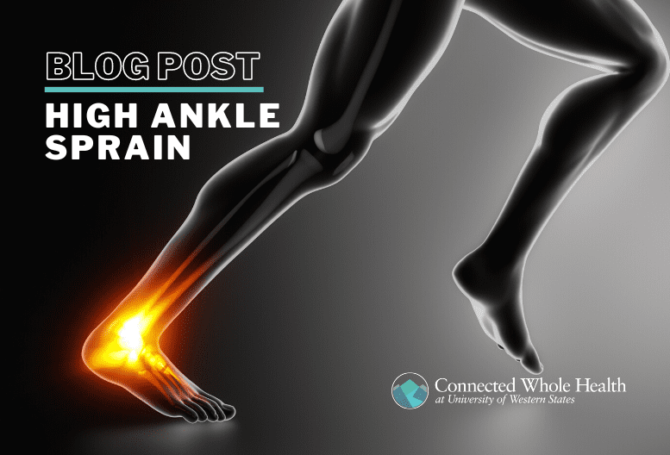
February 9, 2023
A high ankle sprain is when you tear or damage the high ankle ligaments that connect the tibia to the fibula. These ligaments are known as syndesmosis, even though that word refers to the joint itself. You might hear your high ankle sprain is called a syndesmotic injury.
The differences between a high ankle sprain and a low ankle sprain aren’t just location. High ankle sprains involve turning inward or outward while your foot is flexed up. Most low ankle sprains happen when the ankle rolls inward, while other low ankle sprains happen when the ankle rolls outward. The low ankle sprains don’t involve the high ankle ligaments. Low ankle sprains are what most of us think of when we hear someone has a sprained ankle.
The ligaments that can be damaged or torn in a high ankle sprain include:
- The anterior inferior tibiofibular ligament: This is found in front of the tibia and fibula.
- The posterior inferior tibiofibular ligament: This is found in the back of the tibia and fibula.
- The interosseous membrane: This membrane stabilizes the tibia and fibula because it’s located in the middle space between the two bones.
What are the symptoms of a high ankle sprain?
Symptoms of high ankle sprain include:
- swelling
- Inability to bear weight on the injury, making actions like climbing stairs difficult.
- Inability to walk on your toes.
- Bruising starts days after the injury.
If you’ve hurt your foot and you can’t put any weight on it, allow the trained docs at Connected Whole Health to provide you with a professional diagnosis and comprehensive treatment plan.
✒️ Chief Editor: Dr. Bill Moreau | DC, DACBSP, FACSM | Chief Medical Officer
